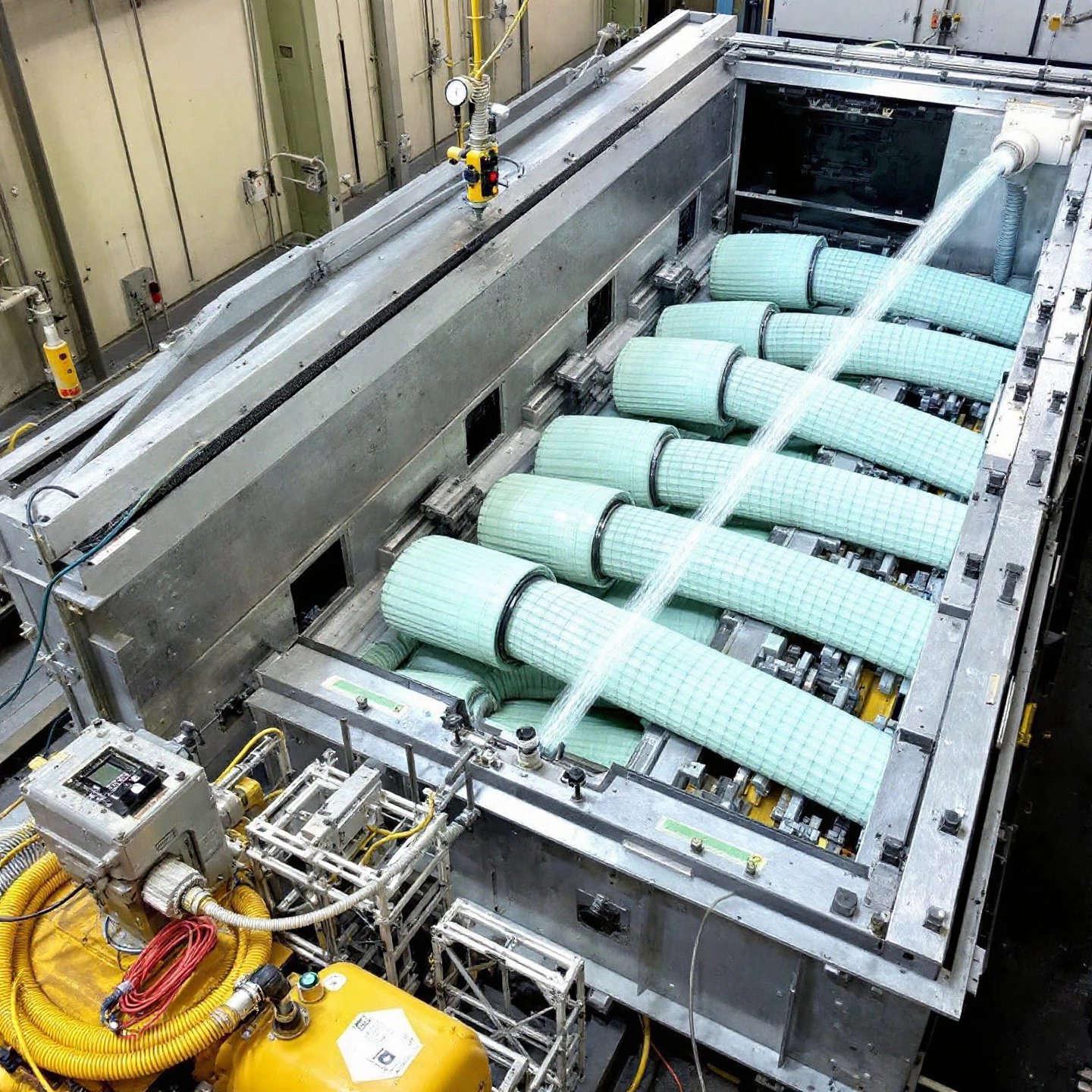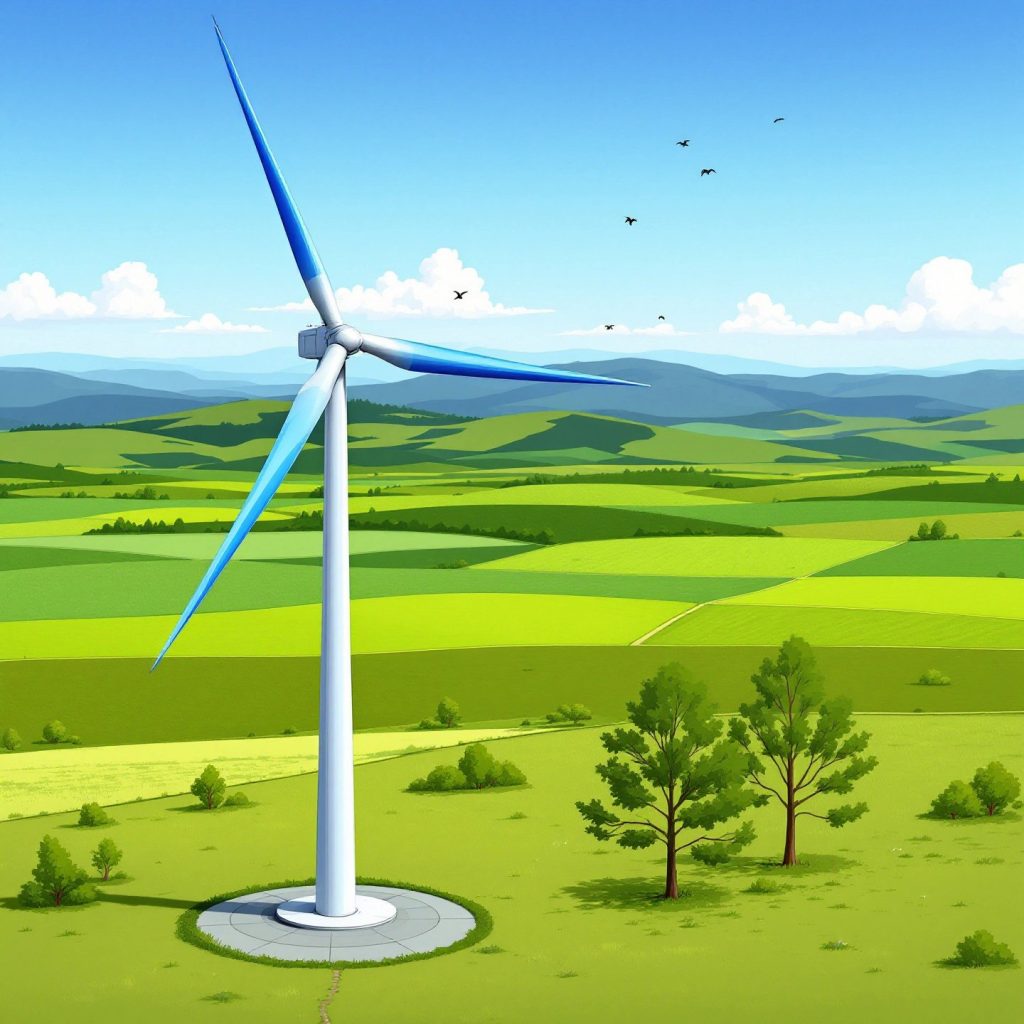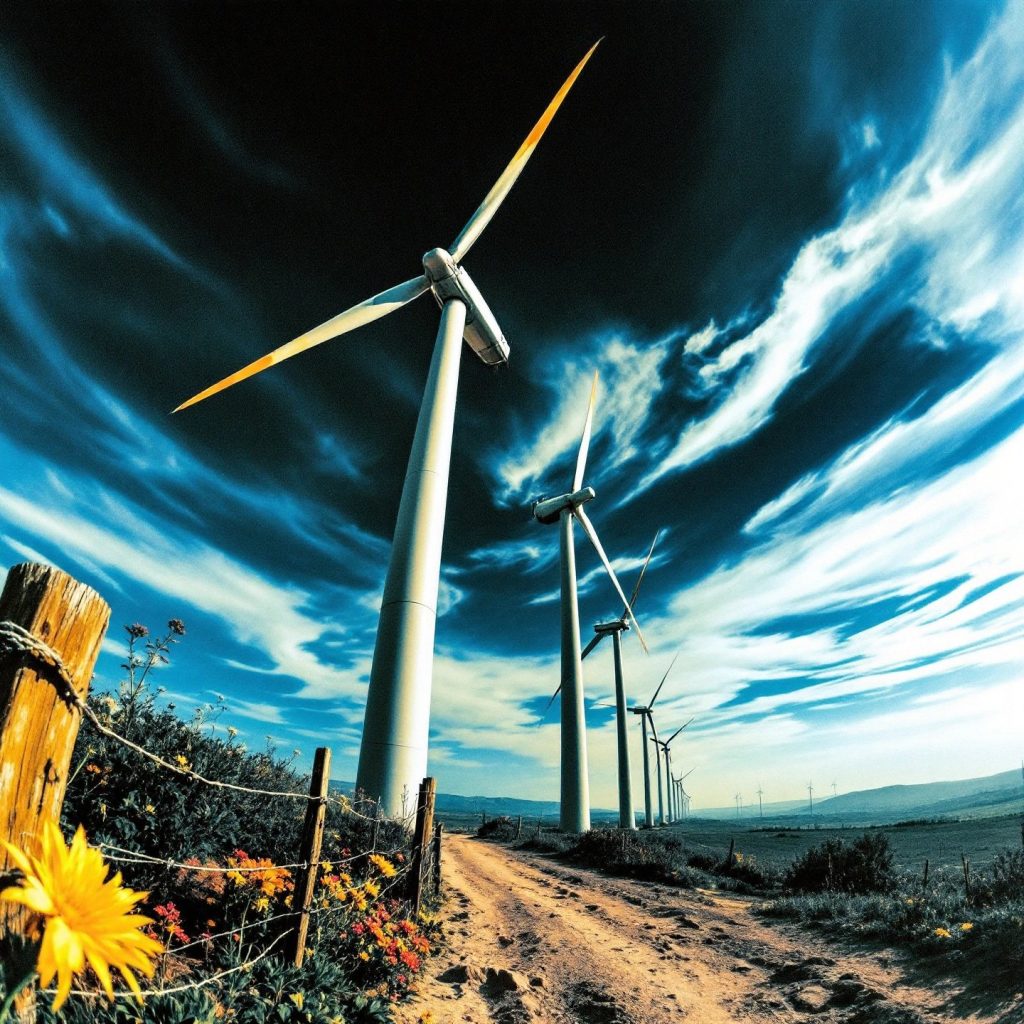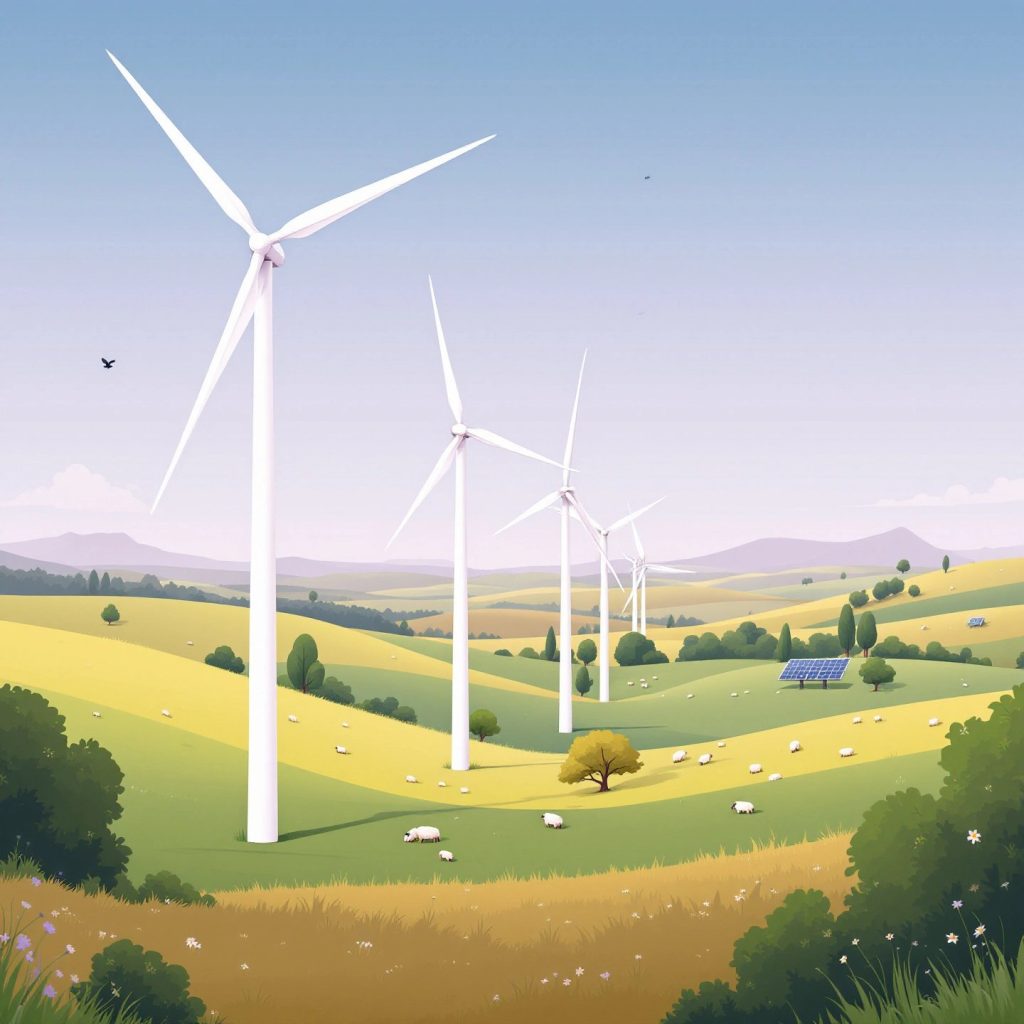Introduction to Wind Energy Blade
Imagine standing in a field, feeling the rush of wind on your face. Now, envision harnessing that invisible force to power homes, schools, and businesses. This is the magic of wind energy, and at the heart of this renewable revolution are wind energy blades. These blades are not just components; they are the lifeblood of wind turbines, essential for converting kinetic wind energy into electricity. But how do they achieve this remarkable feat?
Wind energy blades, often referred to as wind turbine blades, are meticulously designed to capture the maximum amount of wind energy. The efficiency of a wind turbine largely hinges on these blades, making their design, materials, and manufacturing processes crucial. A well-designed blade maximizes lift while minimizing drag, ensuring that the turbine operates efficiently across a range of wind speeds.
Furthermore, the choice of materials plays a pivotal role in blade performance. Advanced composites like glass fiber reinforced polymers (GFRP) and carbon fiber reinforced polymers (CFRP) are commonly used due to their strength and lightweight properties. These materials enable the blades to withstand the immense forces exerted by the wind while maintaining structural integrity. As technology advances, sustainable materials are also being explored to reduce the environmental impact of blade production and disposal.
Manufacturing processes are equally important, involving sophisticated techniques to ensure precision and durability. Techniques like vacuum-assisted resin transfer molding (VARTM) are employed to create robust and reliable blades that can endure the harshest of weather conditions over decades.
In summary, wind energy blades are the cornerstone of wind power generation. Their design, material selection, and manufacturing are integral to optimizing turbine performance, making them a key focus in the pursuit of sustainable energy solutions. As we delve deeper into the intricacies of blade design and production, you’ll discover the fascinating blend of engineering and innovation that powers our transition to a greener future.

Understanding Wind Energy Blade Design
When you stand next to a wind turbine, have you ever wondered how its blades manage to capture the wind so effectively? The secret lies in their aerodynamic design, a complex interplay of physics and engineering that ensures maximum efficiency in energy capture. Let’s break down the key aerodynamic principles that shape wind energy blade design.
At the core of this design are the forces of lift and drag. Just like an airplane wing, a wind energy blade is crafted to create lift, a force perpendicular to the wind direction, which propels the turbine to rotate. Conversely, drag is a force that opposes motion. Minimizing drag while maximizing lift is crucial for efficient blade performance.
Key Aerodynamic Considerations:
- Blade Shape: The aerodynamic profile of a blade resembles an airplane wing, known as an aerofoil, which is curved to enhance lift. This shape allows the blade to capture more wind energy by creating a pressure difference between the upper and lower surfaces.
- Angle of Attack: This angle between the oncoming wind and the blade’s chord line is vital. An optimal angle of attack maximizes lift without causing excessive drag. If the angle is too steep, it may lead to stall, reducing efficiency.
- Tip Speed Ratio (TSR): This is the ratio of the blade tip speed to the wind speed. A well-designed blade maintains an optimal TSR to ensure that the turbine extracts the maximum energy from the wind.
- Pitch Control: Adjusting the pitch or angle of the blades helps control the rotor speed and maintain efficiency, especially in varying wind conditions.
These elements work together to create a blade that not only captures wind effectively but also withstands the forces it encounters. The design must balance aerodynamic efficiency with structural integrity to ensure long-term performance.
As we explore further, we’ll see how the choice of materials and manufacturing processes contribute to achieving this delicate balance, paving the way for more efficient and sustainable wind energy solutions.
Materials Used in Wind Energy Blades
When it comes to constructing wind energy blades, the choice of materials is crucial. The materials not only determine the blade’s strength and durability but also its environmental impact and cost-effectiveness. Let’s delve into the most commonly used materials in wind turbine blades and explore some innovative sustainable alternatives.
Traditional Materials
Wind turbine blades are predominantly made from composite materials due to their favorable strength-to-weight ratios and fatigue resistance. Two primary materials are widely used:
- Glass Fiber Reinforced Polymers (GFRP): Known for their excellent mechanical properties and cost-effectiveness, GFRPs are the most common choice in blade manufacturing. They offer good fatigue resistance and are relatively easy to process, making them suitable for large-scale production.
- Carbon Fiber Reinforced Polymers (CFRP): These materials are preferred for their superior strength and stiffness, albeit at a higher cost. CFRPs are lighter than GFRPs, allowing for longer blades without compromising structural integrity. Their high tensile strength makes them ideal for withstanding the immense forces exerted by wind.
Emerging Sustainable Materials
As the industry moves towards sustainability, new materials are being explored:
- Bamboo-Based Composites: Bamboo is gaining attention as a renewable, fast-growing resource with a high strength-to-weight ratio. Combined with other natural fibers, bamboo composites offer a biodegradable alternative with reduced environmental impact.
- Mycelium Composites: Utilizing the root structure of fungi, mycelium composites are lightweight, heat-resistant, and compostable. These materials can be grown on agricultural waste, offering a novel way to reduce reliance on synthetic polymers.
Comparative Analysis of Blade Materials
| Material | Strength | Weight | Cost | Environmental Impact |
|---|---|---|---|---|
| GFRP | High | Moderate | Low | Moderate |
| CFRP | Very High | Low | High | Low |
| Bamboo-Based | Moderate | Low | Low | Low |
| Mycelium | Moderate | Very Low | Variable | Very Low |
The ongoing development of sustainable blade materials is promising for the future of wind energy. By selecting materials that balance performance with environmental responsibility, the industry can work towards reducing the ecological footprint of wind power generation. As we continue, we’ll explore how these materials are crafted into the blades that power our wind turbines.

Manufacturing Processes for Wind Energy Blades
Crafting a wind energy blade is a feat of modern engineering, requiring precision and innovation to ensure optimal performance and longevity. Two key manufacturing techniques dominate the industry: Vacuum-Assisted Resin Transfer Molding (VARTM) and the use of pre-impregnated materials, commonly known as ‘prepreg’. Each method has its unique advantages and challenges, contributing to the overall effectiveness of wind blade manufacturing.
Vacuum-Assisted Resin Transfer Molding (VARTM)
VARTM is a popular method in wind blade manufacturing due to its cost-effectiveness and ability to produce high-quality composites. This process involves infusing resin into a dry fiber preform under vacuum pressure, ensuring thorough saturation and minimal void content.
- Advantages:
- Cost-effective for large-scale production.
- Reduces voids, enhancing the mechanical properties of the blade.
- Allows for complex shapes and large-scale components.
- Challenges:
- Requires precise control of resin flow and vacuum pressure.
- Potential for dry spots if not carefully managed.
Steps involved in the VARTM process:
- Prepare the mold and place the dry fiber preform.
- Seal the setup with a vacuum bag and apply vacuum pressure.
- Inject resin into the mold, allowing it to infuse through the fibers.
- Cure the resin to solidify the composite structure.
Prepreg Materials
Prepregs, which are fibers pre-impregnated with resin, offer another route in wind blade manufacturing. This technique is known for its ability to produce blades with superior mechanical properties and uniformity.
- Advantages:
- Ensures consistent resin distribution and fiber alignment.
- Facilitates high-performance blades with reduced weight.
- Minimizes environmental impact through controlled resin usage.
- Challenges:
- Higher material costs compared to VARTM.
- Requires specialized storage conditions to prevent premature curing.
Steps involved in using prepreg materials:
- Cut and lay up the prepreg sheets onto the mold.
- Apply heat and pressure to cure the resin within the prepreg.
- Allow the composite to cool and demold the finished blade.
Both VARTM and prepreg methods play vital roles in wind blade manufacturing, each offering distinct benefits that contribute to the performance and sustainability of wind energy solutions. As we move forward, these processes continue to evolve, integrating new materials and technologies to meet the growing demands of renewable energy.
Challenges in Scaling Up Wind Energy Blades
Imagine trying to balance a pencil on your fingertip. Now, scale that pencil up to the size of a football field, and you begin to understand the engineering challenges of scaling up wind energy blades. As the demand for renewable energy grows, so does the need for larger wind turbines to capture more wind and generate more power. However, increasing the size of wind energy blades presents several unique challenges.
Firstly, structural integrity becomes a paramount concern. Larger blades must be designed to withstand greater forces without compromising their structural stability. This requires advanced materials and engineering solutions to ensure that the blades can endure the immense stresses from wind and gravitational forces. Engineers are exploring new materials and computational models to predict and enhance the performance of these massive structures.
Another significant challenge lies in the transportation of these oversized components. According to Freedom Heavy Haul, modern turbine blades can exceed 250 feet in length, making them longer than a Boeing 747’s wingspan. Transporting such large parts requires meticulous planning, specialized equipment, and often, temporary modifications to infrastructure, such as removing traffic lights or reinforcing bridges to accommodate the load.
Finally, the installation of these colossal blades is no small feat. It requires precise coordination and specialized cranes capable of lifting heavy loads to great heights. The installation process must account for weather conditions, as high winds can delay or complicate the placement of blades. Moreover, the logistics of assembling these components in remote or offshore locations add another layer of complexity.
In conclusion, scaling up wind energy blades involves overcoming significant engineering and logistical hurdles. As we strive to harness more wind energy, innovative solutions and collaborative efforts are essential to address these challenges and push the boundaries of what is possible in renewable energy technology.
Innovations in Wind Energy Blade Technology
Imagine a wind turbine blade that not only bends but also twists, adapting to the wind’s force to optimize performance. This is the essence of innovative wind blade technology, a field that is rapidly evolving to enhance the efficiency and durability of wind turbines. Among the most groundbreaking advancements are bend-twist-coupled blades and flatback airfoils, which have revolutionized the industry by allowing longer blades without the added weight or cost.
These innovations are the result of extensive research and collaboration, as highlighted by the U.S. Department of Energy. Let’s delve into these key advancements and understand their benefits:
Bend-Twist-Coupled Blades
- Adaptive Response: These blades twist as they bend, reducing the load and stress on the blade. This adaptability allows for longer blade lengths, capturing more wind energy without increased structural demands.
- Enhanced Lifespan: By changing the angle of attack during high winds, these blades decrease wear and tear, extending their operational life.
- Cost Efficiency: The technology supports longer blades without significant increases in material costs, making wind energy more economically viable.
Flatback Airfoils
- Improved Aerodynamics: The flatback design enhances the blade’s structural strength and aerodynamic performance, especially in the inner blade sections.
- Manufacturing Simplicity: These airfoils simplify the manufacturing process by allowing the main load-bearing structure to be a single, constant-thickness component, reducing complexity and variability in quality.
- Energy Efficiency: By optimizing the blade design, these airfoils contribute to an estimated 20% reduction in energy costs, as they enable the capture of more energy with less material.
These technological advancements are not only enhancing the performance and cost-effectiveness of wind energy but are also paving the way for future innovations. As we continue to push the boundaries of what is possible, the integration of such innovative wind blade technologies will be crucial in meeting global renewable energy goals.

Environmental Considerations and Sustainability in Wind Energy Blades
As the world races towards sustainable energy solutions, the environmental impact of wind energy blades becomes a critical consideration. While wind turbines are celebrated for their low operational emissions, the production and disposal of these blades pose significant challenges. Let’s explore the environmental implications and the innovative strategies being developed to promote sustainable wind energy.
Challenges in Wind Blade Recycling
Wind turbine blades are primarily constructed from composite materials like fiberglass and carbon fiber, which are renowned for their durability and strength. However, these materials present a recycling conundrum due to their complex structure. Unlike metals, composites are not easily separated into reusable components, making recycling a costly and technically challenging process.
According to Iberdrola, the European wind industry aims to recycle or recover 100% of end-of-life blades by 2025, yet achieving this goal requires overcoming significant hurdles. The current recycling methods—mechanical, thermal, and chemical—each have their limitations:
- Mechanical Recycling: Involves shredding blades into smaller pieces for use in construction materials. While effective, it doesn’t fully reclaim the original materials.
- Thermal Recycling: Incinerates blades to recover energy, but may not completely preserve the material’s properties.
- Chemical Recycling: Uses solvents to separate fibers from resins, potentially offering a more complete material recovery but at a higher cost.
Innovative Solutions for Sustainability
To address these challenges, the wind industry is exploring several innovative approaches:
- Repurposing Blades: Old blades are being creatively reused in architectural structures, such as bridges and playgrounds, diverting them from landfills.
- Developing New Materials: Research is underway to create blades from inherently recyclable materials, such as thermoplastic composites, which can be remolded and reused.
These efforts are crucial as the global cumulative mass of decommissioned blades is expected to reach 43 million metric tons by 2050, according to C&EN. This staggering figure underscores the urgency of finding sustainable solutions.
Comparative Environmental Impact of Blade Materials
| Material | Recyclability | Environmental Impact | Disposal Method |
|---|---|---|---|
| Fiberglass | Low | Moderate | Landfill/Mechanical Recycling |
| Carbon Fiber | Moderate | High | Chemical Recycling |
| Thermoplastic Composites | High | Low | Remolding/Recycling |
In conclusion, while the environmental challenges of wind blade recycling are formidable, the industry’s commitment to sustainable practices and innovative solutions offers hope. As we continue to advance in wind energy technology, integrating sustainable practices will be key to ensuring that wind power remains a truly green energy source.
Conclusion
As we draw our exploration of wind energy blades to a close, it’s clear that these components are more than mere parts of a turbine. They represent the pinnacle of engineering, materials science, and environmental stewardship. From the aerodynamic intricacies of blade design to the innovative materials used in their construction, every aspect of wind energy blades is meticulously crafted to optimize performance and sustainability.
In our discussion, we highlighted how the choice of materials—ranging from traditional composites like GFRP and CFRP to emerging sustainable options like bamboo and mycelium—plays a pivotal role in enhancing blade efficiency while minimizing environmental impact. The manufacturing processes, particularly techniques like VARTM and the use of prepreg materials, further underscore the complexity and precision required to produce blades capable of withstanding the forces of nature.
Yet, the journey doesn’t end here. The challenges of scaling up wind energy blades to meet growing demand, coupled with the need for sustainable disposal solutions, call for continuous innovation. As we strive to harness more renewable energy, technologies such as bend-twist-coupled blades and flatback airfoils are paving the way for more efficient and longer-lasting turbines.
Looking ahead, the integration of wind energy with other renewable sources, such as solar power, is crucial for a holistic approach to sustainable energy solutions. In this context, exploring platforms like Renewable Energy Nexus can provide valuable insights and resources. Their extensive selection of solar panels complements wind energy, offering a comprehensive solution to reduce carbon footprints and embrace a cleaner future.
Ultimately, the future of wind energy is bright, driven by a commitment to innovation and responsible practices. As we continue to push the boundaries of what’s possible, the collaboration between industry, academia, and communities will be key to ensuring that wind energy remains a cornerstone of sustainable power generation.
Frequently Asked Questions
1. What is the role of a wind energy blade?
Wind energy blades are crucial for converting kinetic wind energy into electricity. Their design, materials, and manufacturing processes directly impact the efficiency and performance of wind turbines, making them essential components in renewable energy generation.
2. Why are wind turbine blades difficult to recycle?
Wind turbine blades are made from composite materials like fiberglass, which are challenging to separate and recycle. Current methods are costly and complex, but innovations in recyclable materials and repurposing strategies are being explored to address these challenges.
3. How do aerodynamic principles affect wind energy blade design?
Aerodynamic principles such as lift, drag, and pitch control are key to wind energy blade design. These principles ensure blades capture maximum wind energy efficiently, balancing performance with structural integrity for optimal turbine operation.
4. What materials are used in wind energy blades?
Common materials include glass fiber reinforced polymers (GFRP) and carbon fiber reinforced polymers (CFRP) for their strength and lightweight properties. Emerging sustainable materials like bamboo-based composites are also being explored to reduce environmental impact.
5. What innovations are emerging in wind energy blade technology?
Technological advancements like bend-twist-coupled blades and flatback airfoils are enhancing blade performance. These innovations allow for longer blades, improving energy capture without increasing weight or cost, and contribute to more efficient wind energy solutions.



